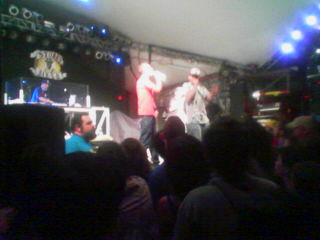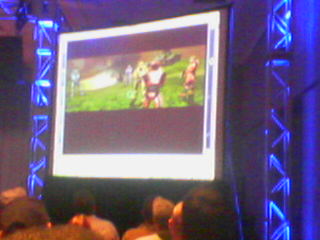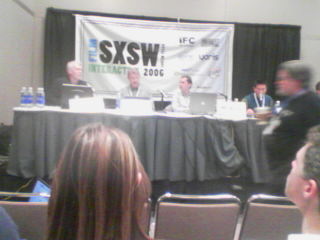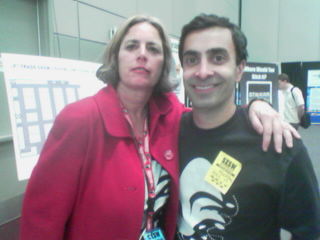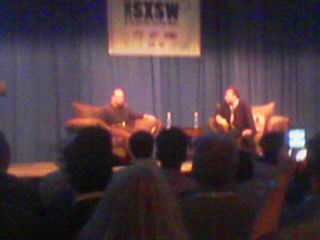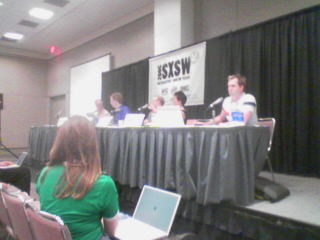The panel included Jeff Benjamin (Crispin, Porter + Bogusky), Todd Connelley (tm-interactive.com), Pete Lerma (Click Here), and Jamie Thomas (winnercomm). The first question posed by moderator Connelley was "What is a Big Idea and How Do You Sell It?" Lerma said that the big idea has to transcend media or any particular campaign. He played a video of coworkers discussing their thoughts on the big idea. Simple, across platforms and media, relevant to brand, takes clients to a new place, new form of expression. How do you sell the big idea? Client has to "get it." Once it is conceived, it should be easy to sell.
He showed some images of campaigns he had worked on: Hyundai Azera Web site - more conventional approach; Pork the Other White Meat (online video); unconventional approach. Presell idea, get excitement going.
Home Depot - ESPN Gameday - site with Blogs; can get a phone call from host.
Chick Fil A - Eat More Chicken - compete with burger chains, not other chicken chains. Tie ins with print, Web site, calendar, other merch, photo ops, etc.
Thomas - understanding clients needs and understanding of clients expertise, understanding, risk taking. Will to buy into it.
True (true.com)- online dating, debunking the lack of truth in online dating services; Connect services in the Web site with the campaign; element of reality TV, presented online; social networking oriented - friends following along online, commenting on date. Presentation of online diaries. Simple, wrapped around business model that client can own and understand, and that public will find interesting.
Benjamin - funny, innovate, viral - but also succeeds in a pretty spectacular way. Sometimes you don't really know which campaign or idea is going to be the big idea. Different ways of selling things to different clients. Must be passionate about the big idea.
Subservient Chicken - Web app., chicken that will do anything you want; for Burger King. Relates to idea of "Have it Your Way."
Car sites - evolution of selecting auto features and see how much it will cost. Inspired by Run Lola Run, configure car and then see it in a film. Went through several clients before finding one that had the same passion. Originated with Saturn but they turned down.
Volkswagen - eventually sold to them; interactive, narrative fiction in advertising. Big ideas were revolutionary, but sometimes have to be sold to client as evolutionary. Built on something that has already existed. Tied to new V Dub campaign. Helps in selling big ideas. Brought woman from ads into Web site.
Benjamin had some pretty astute and memorable comments to end the session. When asked about where the next big idea would come from, he thought that we might be looking at things that were more useful than funny, and that the next idea would probably not come from advertisers, but from people like the ones attending the festival, those that are passionate about technology and its usage (apps like Dodgeball, Flicker, Google Maps). This highlights the importance of bringing in voices outside of ones specific field that can support and compliment. We can't really think in terms of designers, communicators, developers as separate entities, but simply all part of the communications process.














